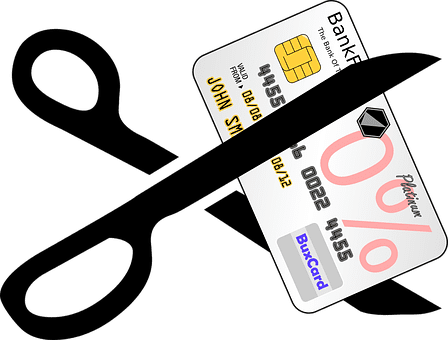Debt is a topic that is not fun to think or worry about, but it’s just as important to financial wellness as budgeting, saving, and long-term planning. In this article, we are going to look at what is considered good debt and bad debt, and how to manage it.
What Is Good Debt and Bad Debt?
Debt is often referred as “good” if you are using it to finance something of value or if it is for a long-term investment; for example, buying a house, a business venture, or pursuing higher education. These are investments and therefore considered good debt, so loans for these items usually have low and fixed interest rates. Conversely, borrowing money to purchase things that do not have any value or may depreciate over time is considered bad debt. Some examples of bad debt are credit cards, car loans, and personal lines of credit. Most credit cards have high interest rates and the interest may increase if you miss a payment. It is better to not borrow, but if you must, try to make sure it is for items that will increase in value.
Managing Debt and Paying it Off
 Having debt can be dangerous. Credit cards, for example, can give you a fall sense of security by allowing you to use money in advance. The danger comes when you use more than you can comfortably pay in full each month. If you pay only the required minimum then you will pay interest on the remaining balance, meaning the cost of the item you bought will have essentially increased (even if you got it on sale). Another danger of using credit cards is that they carry high interest rates, and some may have maintenance fees or late payment fees, increasing your credit card balance quickly and making it more difficult to pay it off. As of the fourth quarter of 2018, Americans’ bad debt reached $4.1 trillion with credit card cards making $834 billion of the total (1).
Having debt can be dangerous. Credit cards, for example, can give you a fall sense of security by allowing you to use money in advance. The danger comes when you use more than you can comfortably pay in full each month. If you pay only the required minimum then you will pay interest on the remaining balance, meaning the cost of the item you bought will have essentially increased (even if you got it on sale). Another danger of using credit cards is that they carry high interest rates, and some may have maintenance fees or late payment fees, increasing your credit card balance quickly and making it more difficult to pay it off. As of the fourth quarter of 2018, Americans’ bad debt reached $4.1 trillion with credit card cards making $834 billion of the total (1).
Since debt can have a hugely negative impact on your emotional and financial health, it’s vital to try to pay it off in full. It may seem counterproductive but build your $1,000 emergency fund first, as soon as possible. As we explained in the article about saving money, you could go deeper into debt should an emergency arise that forces you to borrow money and do away with your progress. While you build your emergency fund, pay the required minimum on all your balances. Once you have built your emergency fund, stop all credit card spending, create a debt payment plan and implement one of two methods: the snowball method or the avalanche method.
The Snowball Method
- List all your debts in order from the smallest to the highest balance and their minimum monthly payments
- Choose your smallest debt balance and put as much extra money as you can towards it, on top of your minimum payment. Make the minimum payment on all other accounts.
- Once you’ve paid off the smallest balance, allocate the payment you were putting towards that to the next smallest balance and repeat the process.
The idea here is that you will gain momentum because your payments will gradually increase to pay the higher balances more quickly and you will also see your progress month to month, hopefully keeping you motivated.
The Avalanche Method
- List all your debts in order from the highest interest rate to the lowest interest rate (do not pay attention to the balance) and their minimum monthly payment
- Choose the debt balance with the highest interest rate and put as much extra money towards it as you can on top of your minimum payment. Make the minimum payment on all other accounts.
- Once you pay off the debt with the highest interest rate, allocate the payment you were putting towards it to the next highest interest account and repeat the process
The idea with the avalanche method is that by prioritizing your debts in order of interest rate, you’ll pay less overall and be out of debt more quickly, although it may take some time to see progress depending on the amount of your debt.
Once you pay off all your bad debt, allocate the monthly payment towards your emergency fund to make sure you save three to six months of living expenses. Make sure you close all your credit cards. If that makes you nervous, keep only one but make sure it is the lowest interest rate credit card possible and use only what you can pay back in a month. Having zero bad debt should give you a sense of freedom that you won’t want to lose. Continue budgeting and you will control your money and know exactly where it goes!
Read the other articles in our Four Steps to Financial Wellness series celebrating Financial Literacy Month:
1. https://www.fool.com/investing/2019/04/03/how-much-debt-do-americans-have.aspx